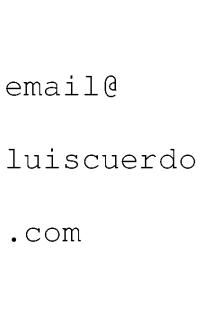Urgent corrections from paper copy Thread poster: Heinrich Pesch
|
|---|
Heinrich Pesch 
Finland
Local time: 12:14
Member (2003)
Finnish to German
+ ...
Last week on Wednesday I turned in a translation, some 12 pages as Word-file.
Today, 6 days later, the agency phones and complains. I agree to look at the corrections.
I recieve a pdf, which is scanned from fax. There are words handwritten all over, between the lines, unterlining, question marks, arrows, all kind of stuff.
Most of the words I cannot decipher.
The agency needs the corrected file tomorrow morning.
I tell the agency that I regret they have chosen an ed... See more Last week on Wednesday I turned in a translation, some 12 pages as Word-file.
Today, 6 days later, the agency phones and complains. I agree to look at the corrections.
I recieve a pdf, which is scanned from fax. There are words handwritten all over, between the lines, unterlining, question marks, arrows, all kind of stuff.
Most of the words I cannot decipher.
The agency needs the corrected file tomorrow morning.
I tell the agency that I regret they have chosen an editor who does not use Word and who's handwriting is like a physician's. Usually editors use track changes, and the translator can accept or decline the changes.
I could apply the corrections I understand, but then they would have a file, which still is not to the liking of th editor.
Have you ever encountered a situation like that. What would you do?
Regards
Heinrich ▲ Collapse
| | | | Margreet Logmans (X) 
Netherlands
Local time: 11:14
English to Dutch
+ ...
| Not acceptable | Mar 11, 2008 |
First of all, let me say that I've never been in a situation like the one you describe.
You are right, most of the time I receive corrections as tracked changes in Word.
I don't think I would accept this. Either the agency should enter the corrections in a Word file using track changes and then send you the file, or they should give you more time and a chance to ask about the writing you cannot read. Perhaps the editor was not one of their own, but the end client. In that case... See more First of all, let me say that I've never been in a situation like the one you describe.
You are right, most of the time I receive corrections as tracked changes in Word.
I don't think I would accept this. Either the agency should enter the corrections in a Word file using track changes and then send you the file, or they should give you more time and a chance to ask about the writing you cannot read. Perhaps the editor was not one of their own, but the end client. In that case, the agency needs to take this up with the end client.
And what do question marks and arrows mean? This is simply not workable. I think your response to the agency was very polite, perhaps too polite. I don't think they are being reasonable here.
Good luck! ▲ Collapse
| | | | Nesrin 
United Kingdom
Local time: 10:14
English to Arabic
+ ...
I'd send back a copy of the document with red circles around all the unclear changes. The editor should be obliged to clarify his/her comments, handwriting, question marks etc.. Next time I'm sure s/he'll think twice before scribbling all over the text.
[Edited at 2008-03-11 16:28]
| | | | | It's not correct | Mar 11, 2008 |
Ask your client to give time for proofreading.
And I would try hard to correct all mistakes even it's not clear (handwriting).
[Edited at 2008-03-11 17:09]
| | |
|
|
|
| Call them on the telephone - | Mar 12, 2008 |
Whenever matters get complicated I try to find a speedy solution through a phone call.
It appears to me that what you describe would make this approach rather necessary.
[Edited at 2008-03-12 01:24]
| | | | | What the stuff means | Mar 12, 2008 |
Margreet Logmans wrote:
And what do question marks and arrows mean?
Not having seen the copy, I can't confirm, but I just want to add here that the arrows and question marks may have been standard reviewing symbols, the kind widely used before computers were used for translation, publishing, press, etc., and the kind still being used today in other industries where people still work on hard copies (manuscripts for books and such). If this is the case, I don't think Heinrich's corrected copy is unacceptable. What is unacceptable is that he has to do all this work on such short notice without being given the chance to discuss the illegible changes to the document with whoever made those changes. What I also find unacceptable is that it sounds like Heinrich's translation was not a bad quality translation, but the client prefers to have things his own way or trusts the person who ultimately reviewed the translation more than he trusts Heinrich. I wouldn't accept to correct each occurrence of the word "client" to the word "customer" merely on the grounds that the client prefers it that way - if the client didn't inform me of his preferences beforehand and didn't provide a glossary, I am afraid he will have to deal with this himself. This would only generate additional unpaid work for me that could otherwise have been prevented. In such circumstances, it should really be the client's job to correct his copy. The fact that they need more work of me than they intially thought doesn't mean I will do the additional work free. Of course, things would be different if there was a quality issue with Heinrich's work...
[Edited at 2008-03-12 03:36]
| | | | | Agree with Viktoria | Mar 12, 2008 |
If you type "revision symbols" in google and go to images you'll get the usual symbols used in revision such as:
http://www.webbschool.com/rhood/english2/proofing_symbols.jpg
or
http://www-rcf.usc.edu/~feagin/RevisionSymbols.jpg
Phone call is also a good idea, it always helps to bring common sense to these situations.
The fact that they need more work of me than they intially thought doesn't mean I will do the additional work free.
This is also very subjective, many translators offer post-translation services happily, but then there is always someone trying to take advantage of your kindness
The problem is that you will probably have a hard time to get your money if you refuse to do it. Best thing to do imho is go through the nightmare and kick them off aftwerwards.
[Edited at 2008-03-12 07:14]
[Edited at 2008-03-12 07:15]
| | | | Heinrich Pesch 
Finland
Local time: 12:14
Member (2003)
Finnish to German
+ ...
TOPIC STARTER | Thanks for your advice | Mar 12, 2008 |
About the marks, they were really no official revision symbols. Because the editor used probably a pencil and the document was faxed I couldn't really understand them. On the phone they explained, that they could not force the editor to use Word, but they did everything to force me. I refused, because I found I was not able to improve on the translation in such a short time.
| | |
|
|
|
Lia Fail (X) 
Spain
Local time: 11:14
Spanish to English
+ ...
| proofreader marks | Mar 12, 2008 |
| | | | Samuel Murray 
Netherlands
Local time: 11:14
Member (2006)
English to Afrikaans
+ ...
| Track Changes is not a standard | Mar 12, 2008 |
Heinrich Pesch wrote:
I tell the agency that I regret they have chosen an editor who does not use Word and who's handwriting is like a physician's. Usually editors use track changes, and the translator can accept or decline the changes.
There seems to be the assumption among certain people that using Track Changes is a kind of proofreading/editing standard, and that everyone doing editing should be using a word processor with Track Changes. Yet many translators also say that they catch more errors if they read a printed hard-copy of their translations. Guess what, the same goes for editors -- they also catch more errors on the hard-copy.
I believe that as a translator you should be familiar with standard proofing markup. You should be able to make changes based on hard-copy amendments.
That said, an editor should realise that (a) his work might be faxed back to the translator and (b) his work should be understandable without further explanation. Doing correction in hand-writing like a crayfish is unacceptable. The translator should not have to spend time trying to decypher the hand-writing. Bad hand-writing is a strain on the eyes and the brain, and it makes the corrector take longer to do the corrections.
The client can't expect you to do these corrections if the text isn't legible.
In my opinion, Track Changes should not be used for editing anyway. It is very useful for proofreading, yes, but it limits the flexibility of the reviewer to perform a good edit. Unless you're one of those reviewers who edit with changes display disabled and leave it up to the poor corrector to figure out what the resultant red and blue mess means.
[Edited at 2008-03-12 20:57]
| | | | To report site rules violations or get help, contact a site moderator: You can also contact site staff by submitting a support request » Urgent corrections from paper copy | CafeTran Espresso | You've never met a CAT tool this clever!
Translate faster & easier, using a sophisticated CAT tool built by a translator / developer.
Accept jobs from clients who use Trados, MemoQ, Wordfast & major CAT tools.
Download and start using CafeTran Espresso -- for free
Buy now! » |
| | Protemos translation business management system | Create your account in minutes, and start working! 3-month trial for agencies, and free for freelancers!
The system lets you keep client/vendor database, with contacts and rates, manage projects and assign jobs to vendors, issue invoices, track payments, store and manage project files, generate business reports on turnover profit per client/manager etc.
More info » |
|
| | | | X Sign in to your ProZ.com account... | | | | | |











